MH17: Buk + Air-to-Air missiles R-60?
June 12, 2015 – by Irina Petrakova, journalist from Moscow, Russia.
A week ago Almaz-Antey, the manufacturer of Buk, held a press conference. During this very interesting event the engineers of the company explained in detail what is wrong with the Western narratives.
Explicitly not excluded by spokesmen of Almaz Antey: the scenario in which air-to-air missiles fired by fighter jet(s) played a role.
Explicitly not excluded by spokesmen of Almaz Antey: the scenario in which air-to-air missiles fired by fighter jet(s) played a role.
At the same day of the Almaz Antey press conference, the Russian Investigative Committee made the identity of a key witness to the MH17 crash public. (Read about the previous anonymity of this witness in Lying by Omission)
Key witness – mechanic Evgeny Agapov
Before fleeing to Russia Evgeny Agapov was a mechanic at air base №A4465 (Nikolaev and Dnepropetrovsk, Ukraine, airfield Aviatorskoe village, about 250 km from the crash site). The witness is a citizen of Ukraine.
Agapov testified that July 17, 2014, three jets went into the air about an hour before MH17 crashed. One of the jets was equipped with two air-to-air missiles type R-60. This particular jet later returned to base without these missiles. The other two jets were shot down. Pilot of the Su-25, captain Vladislav Voloshin, was scared according to Agapov. “It was the wrong plane” (Самолет не тот), Voloshin said as he got out of his plane. Later flight director Dyakiv talked to captain Voloshin. Dyakiv asked: “What happened to the plane?” to which Voloshin replied: “The plane was in the wrong time and the wrong place.” source
Kiev denies it had any fighter jets in the sky July 17th
But at least five people reported seeing fighter jet(s) near MH17

These eyewitnesses are residents living in various villages near the crash site. They were interviewed by journalists from Britain, France and the Netherlands. BBC News broadcasted eyewitness accounts of three women saying they saw a fighter jet near Boeing MH17 and heard the sound of an explosion in the sky.
Eyewitness #1: “There were two explosions in the air. And this is how it broke apart. And [the fragments] blew apart like this, to the sides. And when …”
Eyewitness #2: “… And there was another aircraft, a military one, besides it. Everybody saw it.”
Eyewitness #1: “Yes, yes. It was flying under it, because it could be seen. It was proceeding underneath, below the civilian one.”
Eyewitness #3: “There were sounds of an explosion. But they were in the sky. They came from the sky. Then this plane made a sharp turn-around like this. It changed its trajectory and headed in that direction [indicating the direction with her hands].”
Eyewitness #4 at the crash site told «Paris Match», that he saw an aircraft near the Boeing:
“The big one plane (Boeing) I did not see – it dived into the clouds. Bah!. Then an explosion was heard. A strong explosion and debris began to crumble. Here 37 people dropped. The plane, which went with him (Boeing), then went to the front. Then he went “like this” (shows the front hand) – went into the clouds, and a few seconds later there was an explosion. After that at Hrabovo, six kilometers away, a column of smoke rose up to the clouds.”
Eyewitness #5 Lev Bulatov told Dutch blogger Max van der Werff he saw three jets – one of them attacking the Boeing, he saw it and heard two explosions and another one moments later.
“I heard SU’s flying over the surface, hitting Torez and Shakhtersk. And than I saw… The fighter jets were actually three. And later I saw that one jet sharply accelerated in that direction [pointing with his arm] to the north and went up. I saw the silhouette of this rook (fighter jet) with my monocular as I can see my own fingers. And when it accelerated, I heard the roar of turbines and it sharply went up. After some time I heard 3 claps: bah-bah—bah (the last one after some time). The last one after some time. I saw the plane [MH-17] started to crash. But! the central part started falling in that direction [showing with his arm], in the direction of Grabovo. The cockpit was separated, as well as one wing with a turbine and tale. Everything else was intact.”
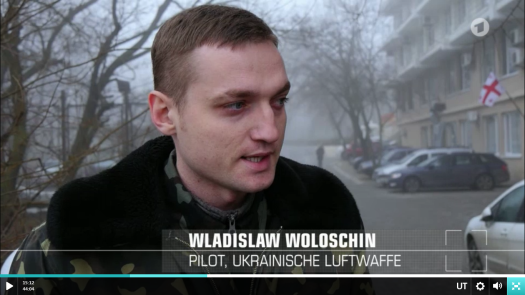 Captain Voloshin told ARD channel, that the events the witness mentions happened July 23, not July 17. But on July 19, two days after the crash of the Malaysian Boeing, Voloshin was awarded the Order of the courage Third Degree. Source
Captain Voloshin told ARD channel, that the events the witness mentions happened July 23, not July 17. But on July 19, two days after the crash of the Malaysian Boeing, Voloshin was awarded the Order of the courage Third Degree. Source
Two other pilots of the 299th вrigade were awarded too: lt. col. Vadim Dzyubenko and colonel Sergey Samoilov. All three flew the modernized fighter jet version Su-25M1 with numbers 06 (Voloshin), 07 (Dzubenko) and 08 (Samoilov) Source. Page of President Poroshenko’s website removed, here is the screenshot.
From 2011 until 2013 Ukraine aviation factory «MiG-Remont» (Zaporozhje) modernized nine Su-25M1 jets for the Ukraine Air Force. The modernized fighter jets have maximum speed exceeding that of the Boeing-777 — 950-975 km per hour. Highest operational altitude: 10,000 meters (33000ft). source & source
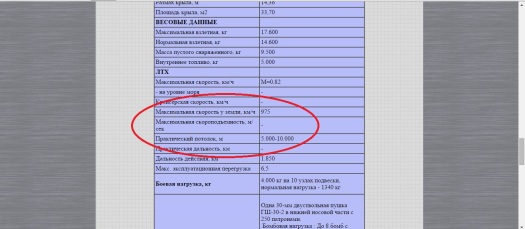
The Sukhoi Su-25 can be equipped with R-60 (AA-8 Aphid) and board cannon GSH-30 or GSH-23. The newest version of the R-60, R-60M (since 1980) was manufactured in Tbilisi (Georgia) until 1990. During the last twenty years the Ukrainian factories «Progress» and «Arsenal» in Kiev have maintained and upgraded these missiles. source
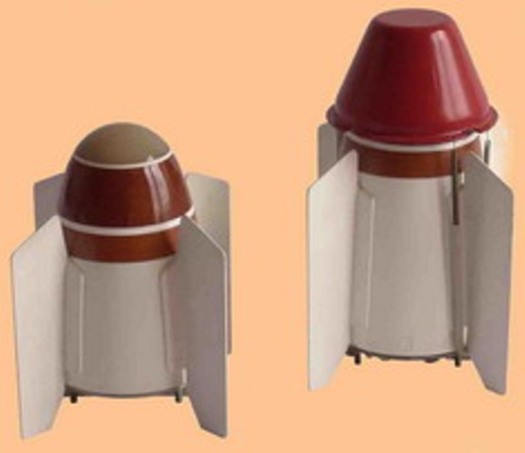
Ukrainian infrared seekers («Komar») from R-60 and R-60M are cooled by liquid nitrogen improving the performance of the missile. Retired members of the Russian and Ukrainian Air Forces write on their forum that R-60 is equipped with ready-made shrapnel elements and wolfram rods (a similar description of the shrapnel and rod-based warhead can be found on other websites). Link
R-60 with Wolfram shrapnel
R-60 and R-60M characteristics:
Diameter 120 mm Length 2 m
Weight = 45 kg Weight of warhead 3-3,5 kg.
Type of warhead: wolfram shrapnel and rods
Distance of target – 7- 10 km
Speed of target – to 2500 km per hour
The range of radio controlled fuses – 5m, contact and contactless.
The probability of hitting the target at close range by R-60M – 0,9, two R-60 – 0,8. Link
Diameter 120 mm Length 2 m
Weight = 45 kg Weight of warhead 3-3,5 kg.
Type of warhead: wolfram shrapnel and rods
Distance of target – 7- 10 km
Speed of target – to 2500 km per hour
The range of radio controlled fuses – 5m, contact and contactless.
The probability of hitting the target at close range by R-60M – 0,9, two R-60 – 0,8. Link
History: two planes hit by R-60 missiles
Boeing-747 KAL 902 was shot down April 1978 over USSR air space by one missile R-60 fired from a Sukhoi Su-15. The Boeing lost 4 meters of its left wing. One of the four engines and the fuselage were damaged and the plane decompressed forcing it to lower its altitude from 30,000 ft to 5,000 ft. The Su-15 was at distance 1 km behind and right from Boeing. Link
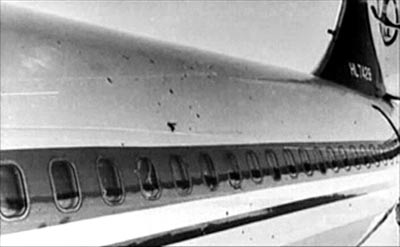
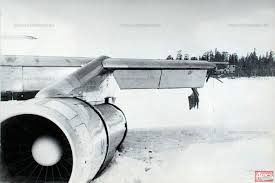
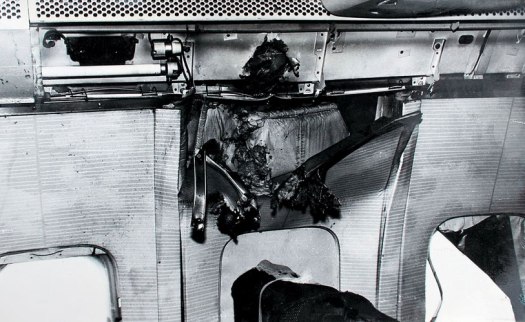
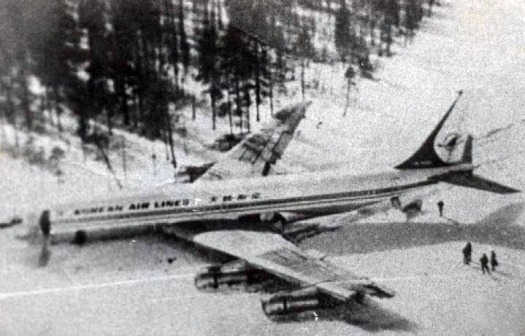
An F-15A of the Israeli Air Force was hit June 9, 1982 over Lebanon by Syrian MiG-21. An R-60 missile damaged the right wing and engine. On the ground it became clear that the right engine nozzle had a hole of one square meter and the horizontal and vertical stabilizers were hit by about 400 pieces of shrapnel. Link
Pseudo-rod warhead
Due to translation issues many English speakers mistakenly believe the warhead of missile R-60 is similar to the Western variant AIM-9 Sidewinder and is of the continuous rod type.
About R-60 missiles warhead three sources are of interest:
– Electronic directory «Russia military»
– Website “Military aviation Russia»
– Forum of former Russia and Ukraine air force pilots
– Electronic directory «Russia military»
– Website “Military aviation Russia»
– Forum of former Russia and Ukraine air force pilots
In descriptions of the R-60M it is mentioned that rods and shrapnel are stacked in the warhead. “Solid wolfram elements forming a tight circle that destroy enemy aircraft” Link
Elements are laid out in triangular shape — the pieces probably have triangular section. “The rod-shaped warhead of R-60M (62М) with wolfram elements would result not in linear but rather in huge delta and diamond shaped holes.
Only R-62 and, starting from the 80s, R-62M were exported. 70% of both missiles had shrapnel (or “pseudo-rod based”) rather than continuous rod based warhead. The space between the case and the rod-shaped sub-projectiles is filled with TNT, which has pyramidal holes next to each semi-prepared sub-projectile in the casing. The sub-projectiles weigh 3 g and reach the speed of 7.5km/s” Link
Elements are laid out in triangular shape — the pieces probably have triangular section. “The rod-shaped warhead of R-60M (62М) with wolfram elements would result not in linear but rather in huge delta and diamond shaped holes.
Only R-62 and, starting from the 80s, R-62M were exported. 70% of both missiles had shrapnel (or “pseudo-rod based”) rather than continuous rod based warhead. The space between the case and the rod-shaped sub-projectiles is filled with TNT, which has pyramidal holes next to each semi-prepared sub-projectile in the casing. The sub-projectiles weigh 3 g and reach the speed of 7.5km/s” Link
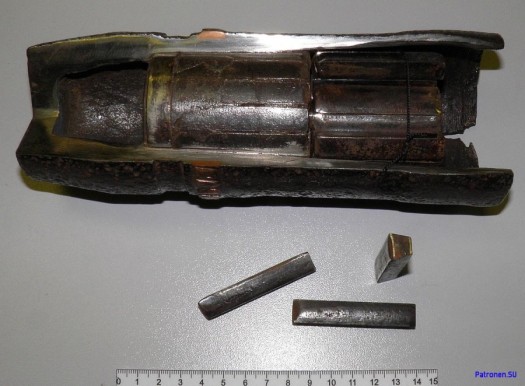 Former Ukranian air force engineer Alexander Luzan writes in his blog that the shape of elements in R-60 and R-27 air-air missiles was similar to elements of older Soviet SAM. Link
Former Ukranian air force engineer Alexander Luzan writes in his blog that the shape of elements in R-60 and R-27 air-air missiles was similar to elements of older Soviet SAM. Link“The overlapping sub-projectiles made of wolfram, which is twice heavier than alloy steel. The cut the power wing set, airframes, and engines,” — says the description of the R-60M warhead. Warhead R-60 has nearly 1000 elements of shrapnel each about 3 g.
Bah-Bah…Bah: two missiles… decompression
Judging by the traces of soot and edges of the holes in the skin ot he left side of the cockpit, the explosion occurred in the vicinity of the outside of the aircraft cabin.
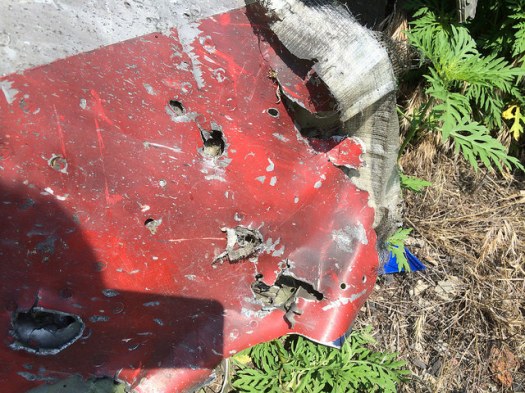

Most of elements exploded on the left side of cockpit: there were about 40-50 holes in the skin of the fuselage and about 50 holes in the floor and the pilot’s seat inside cabin and nose wheel leg.

- Workers transport a piece of the Malaysia Airlines flight MH17 wreckage at the site of the plane crash near the village of Hrabove in eastern Ukraine Nov. 20, 2014. Antonio Bronic/REUTERS
Various holes in curling of the engine and in horizontal stabilizer.
In the central part of MH17 big holes with size more than 5 cm and diamond holes size more than 10 cm are visible – like in the describtion of newest R-60M missile.
Also we see huge holes near engines in the center of fuselage.
And big holes at tail side of the Boeing
Cuts in the outer skin and inner frames
Summary
– At least five eyewitnesess near the crash site saw at least one fighter jet near the Boeing-777
– Holes in the debris of the MH17 cockpit coincide with damages caused by R-60 missile that hit Korean Boeing in 1978 and fit the description of the use of R-60M missiles: huge diamond holes in central parts of the Boeing.
– Evgeny Agapov, mechanic at air base 299 brigade of the Ukrainian Air Force testified that the pilot who shot down MH17 with two missiles R-60 was pilot Vladislav Voloshin flying Su-25M1 (number 06), a modernized Sukhoi 25.
– Two days after MH17 crashed, July 19, captain Voloshin was awarded for courage and heroism although he claims that he was involved in a fight on July 23.
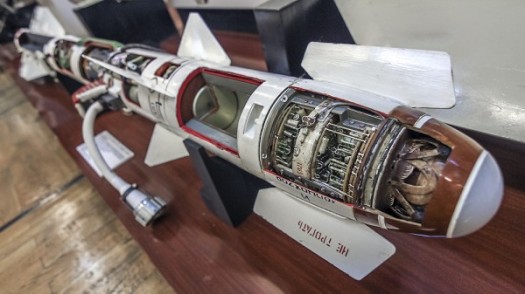
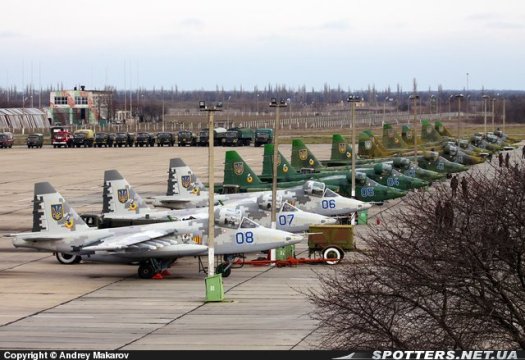
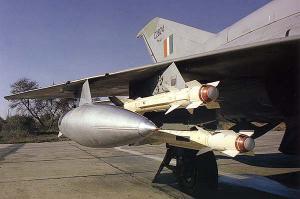
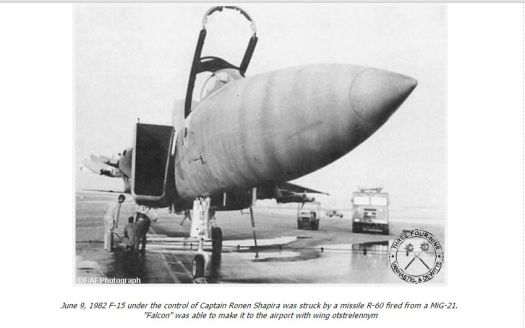
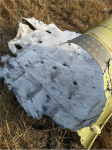
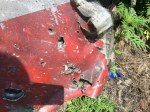
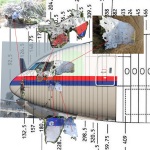


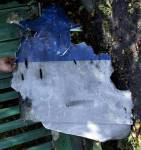
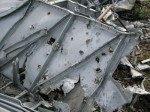

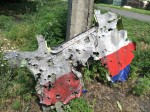
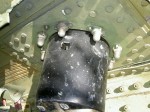
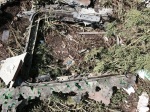
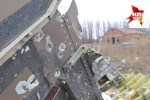

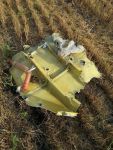




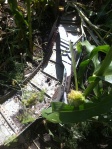


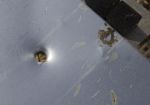





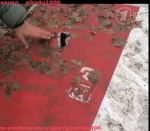
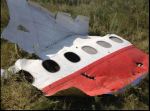

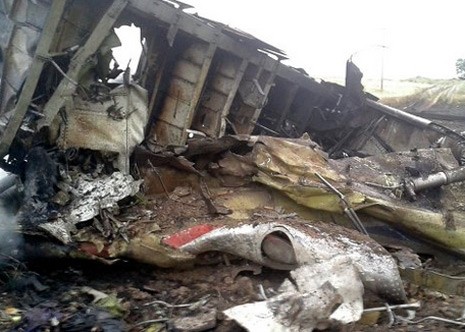




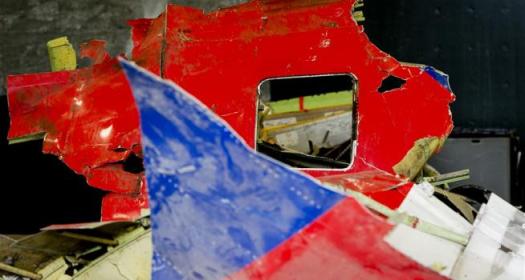
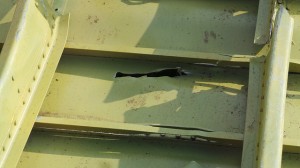
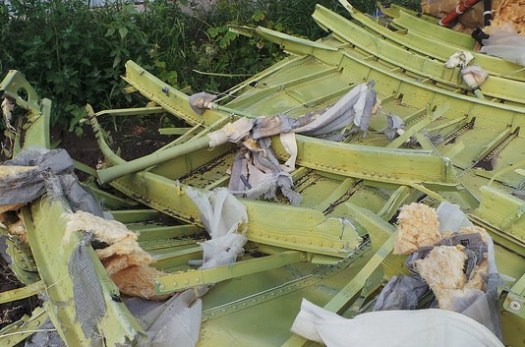



Geen opmerkingen:
Een reactie posten